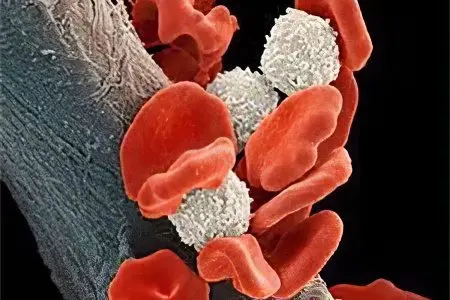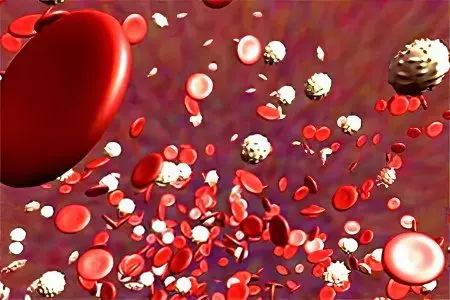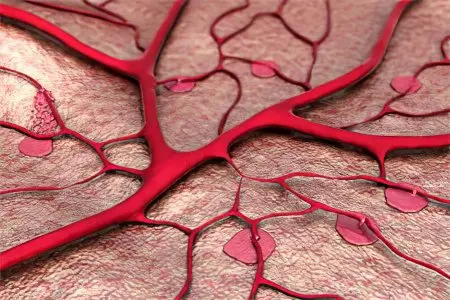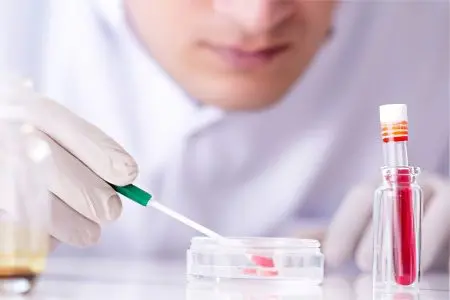Contents

Agranulocytosis is a condition that characterizes a violation of the qualitative composition of the blood. At the same time, the level of granulocytes, which are a special type of leukocytes, decreases in the peripheral blood. Granulocytes include neutrophils, eosinophils, and basophils. Agranulocytosis is characteristic of many diseases. In women, it is detected more often than in men, especially for people who have crossed the age limit of 40 years.
These blood elements received the name “granulocytes” for the reason that after they are stained with a number of special dyes (during the study), they become granular. Since granulocytes are a type of leukocyte, agranulocytosis is always accompanied by leukopenia.
The basic component of granulocytes are neutrophils (90%). They are designed to protect the body from various harmful factors, including their action is aimed at the destruction of cancer cells. Neutrophils engulf microbes, as well as infected cells, foreign components, and tissue debris. Neutrophils produce lysozyme and interferon. These substances are natural protective components of the body that allow it to fight viruses.
So, the most important effects of neutrophils include:
Preservation of normal functions of the immune system.
Activation of the blood coagulation system.
Maintaining the purity of the blood.
All granulocytes are born in the bone marrow. When an infection enters the body, this process proceeds at an accelerated pace. Granulocytes are sent to the site of infection, where they die in the course of the fight against pathogens. By the way, in purulent masses there is always a large number of dead neutrophils.
Agranulocytosis in the modern world is diagnosed quite often, as people are forced to take cytostatics and undergo radiation therapy to get rid of many diseases. Agranulocytosis, if left untreated, can cause serious health complications. Many of them are even life threatening. These include sepsis, peritonitis, mediastinitis. The acute form of agranulocytosis in 80% of cases leads to the death of patients.
Reasons for the development of agranulocytosis

Agranulocytosis cannot develop on its own, there is always some reason for its occurrence.
Internal factors that can provoke agranulocytosis:
Predisposition to agranulocytosis at the genetic level.
Various diseases that affect the immune system, such as systemic lupus erythematosus, thyroiditis, Bechterew’s disease, glomerulonephritis, etc.
Leukemia and aplastic anemia.
Metastases that have entered the bone marrow.
Extreme exhaustion.
External causes that can lead to the development of agranulocytosis include:
Viral infections: tuberculosis, hepatitis, cytomegalovirus, Epstein-Barr virus.
Bacterial diseases that have a generalized forum.
Sepsis.
The passage of therapy with a number of drugs: Aminazine, cytostatic drugs, antibiotics from the beta-lactam group.
Passage of radiotherapy.
Passage of radiation therapy.
Poisoning with chemicals, including those that are part of household chemicals.
Intake of low quality alcoholic beverages.
Agranulocytosis: forms of the disease

Agranulocytosis can develop throughout life, and may be a hereditary disorder. However, the form of the disease, which is transmitted through genetic links, is extremely rare.
The disease can have a chronic and acute course.
Depending on the cause that provoked the development of agranulocytosis, the following forms are distinguished:
Cytostatic disease (myelotoxic agranulocytosis).
Immune agranulocytosis and hapten agranulocytosis.
Idiopathic agranulocytosis (genuine), while the cause of the development of the disorder is not established.
immune form
The disorder manifests against the background of the death of mature granulocytes, which are pathogenically affected by the body’s own antibodies. The diagnosis can also be made on the basis of a blood test, during which neutrophil progenitor cells are detected. Since the mass death of granulocytes occurs in the body, this leads to its poisoning. Therefore, the symptoms of such agranulocytosis will be acute.
Autoimmune agranulocytosis is characterized by signs of diseases such as collagenosis, vasculitis and scleroderma. Antibodies circulate in the blood, which are aimed at fighting their own cells and tissues. It is believed that even a serious psychological trauma or a viral infection can provoke a disease. Do not exclude the congenital predisposition of a person to autoimmune diseases. The prognosis of agranulocytosis, proceeding according to the autoimmune type, depends on the severity of the course of the underlying disease.
Hapten agranulocytosis always has a severe course. A disorder develops after the introduction into the body of drugs that can act as haptens. Haptens, once in the body, can interact with granulocyte proteins and become dangerous. They begin to attract antibodies to themselves, which destroy them along with the granulocytes glued to them.
The role of haptens can be performed by drugs such as: Acetylsalicylic acid, Diacarb, Amidopyrine, Analgin, Indomethacin, Trimethoprim, Isoniazid, Pipolfen, Norsulfazol, PASK, Erythromycin, Butadione, Ftivazid. If you take these drugs in courses, then the risk of developing agranulocytosis increases.
Myelotoxic agranulocytosis
This form of the disorder develops against the background of treatment with cytostatics or during the passage of radiation therapy. As a result of such an impact on the body, there is an inhibition of the synthesis of precursor cells of granulocytes, which are born in the bone marrow.
The higher the dose of the drug or radiation, as well as the stronger its toxicity, the more severe the agranulocytosis will be.
In addition to cytostatics (Methotrexate, Cyclophosphamide), drugs from the penicillin group, as well as aminoglycosides and macrolides, can provoke the development of agranulocytosis.
Endogenous myelotoxic agranulocytosis is accompanied by suppression of blood cells that are formed in the bone marrow. They are destroyed by tumor toxins. In the future, healthy cells themselves transform into cancer cells.
Exogenous myelotoxic agranulocytosis develops against the background of severe damage to the bone marrow, which occurs as a result of external factors. At the same time, red bone marrow cells begin to multiply actively, but their sensitivity increases. They respond to every negative impact coming from the external environment.
Drug agranulocytosis leads to the use of cytostatics, which are prescribed for the treatment of cancer and autoimmune processes. They suppress the immune system and negatively affect the formation of granulocytes.
Symptoms of agranulocytosis

The myelotoxic form of agranulocytosis may have a latent course, and may make itself felt with symptoms such as:
Nosebleeds and uterine bleeding that recur regularly.
The appearance of bruises on the skin and the appearance of a hemorrhagic rash on it.
The appearance of blood impurities in the urine.
Pain in the abdomen as contractions.
Vomiting and diarrhea.
Increased bloating, overflow in the intestines.
Blood in feces.
The walls of the intestine against the background of agranulocytosis are quickly covered with ulcers, areas of necrosis appear on them. In a severe course of the disease, internal bleeding may open, while the person will begin to suffer from an acute abdomen clinic.
Areas of necrosis can also occur on the inner surface of the organs of the genitourinary system, lungs, and liver. If the lung tissue is affected, then the patient develops shortness of breath, cough and pain in the chest. At the same time, an abscess is formed in the lungs themselves, followed by gangrene of the organ.
The following signs may indicate immune agranulocytosis:
The disease always manifests acutely, accompanied by high body temperature.
The skin becomes unnaturally pale, sweating of the palms increases.
Joint pains appear, pharyngitis, tonsillitis, stomatitis and gingivitis develop.
Increased salivation.
Lymph nodes increase in size.
Symptoms of esophageal dysphagia are observed.
The liver becomes larger in volume, which can be detected by palpation.
When the mucous membranes of the oral cavity are affected, not only the gums become inflamed, but also the tongue, tonsils, and pharynx. Films appear on them, under which the bacterial flora multiplies. Their waste products are absorbed into the systemic circulation, causing severe poisoning of the body. A person has severe headaches, nausea, vomiting and other symptoms of intoxication. Serological blood tests can detect anti-leukocyte antibodies in it.
In childhood, Kostman’s agranulocytosis is most often diagnosed. The disease is transmitted with genes, while the carrier of the gene can be both the father and the mother. Children lag behind their peers in mental and physical development, their blood composition changes. Why genes mutate has not yet been established.
If a child is born with Kostman’s agranulocytosis, then his skin will be covered with purulent rashes, ulcers and subcutaneous hemorrhages will be present in the mouth. Older children often develop otitis, rhinitis, pneumonia. The disease is always accompanied by high body temperature, enlarged lymph nodes and liver.
The course of the disease is chronic, in its acute phase ulcers appear on the mucous membranes. If the number of granulocytes in the blood increases, then the disease fades away. The older the child becomes, the less intense the periods of exacerbation become.
However, the severe course of agranulocytosis is associated with a number of complications, including:
Pneumonia.
Lung abscess.
Intestinal perforation.
Peritonitis.
Sepsis.
Endotoxic shock.
Inflammation of the kidneys and other organs of the urinary and reproductive system.
How to detect agranulocytosis?

To confirm the diagnosis, you must go to the hospital.
The doctor will assess the patient’s condition and, based on the symptoms, prescribe the following studies:
Donating blood for a general analysis.
Urine for general analysis.
Immunogram, myelogram and sternal puncture.
Blood test for sterility.
X-ray examination of the lungs.
Perhaps the patient will be referred for a consultation with an otolaryngologist and a dentist.
How to treat agranulocytosis?

To cure a person from agranulocytosis, you will need to implement the following therapeutic regimen:
The patient is admitted to the hospital in the hematology department of the hospital.
The patient should be in a box where the air is regularly treated, achieving a sterile environment.
Treatment should proceed from the cause that provoked the development of agranulocytosis. Sometimes it is enough to get rid of the infection to bring the level of granulocytes back to normal.
If the patient is seriously affected by the intestines, then he is transferred to parenteral nutrition.
The mouth should be rinsed with antiseptic solutions.
If agranulocytosis is provoked by radiation therapy or medication, then treatment should be stopped.
Purulent processes require the appointment of antibiotics from two different groups. These can be drugs such as: Neomycin, Polymyxin, Oletetrin. Be sure to prescribe antimycotic drugs to the patient: Fluconazole, Nystatin, Ketoconazole. Antibiotics are indicated for patients whose white blood cell count falls below 1,5 * 109/ l. In a complex treatment regimen, immunoglobulins can be prescribed at a dosage of 400 mg/kg once.
In order to enhance the production of leukocytes, the patient is prescribed drugs Pentoxyl, Leikomax, Leukogen. Treatment course, it should last for 2-4 weeks.
Perhaps the appointment of high doses of hormonal drugs: Prednisolone, Dexamethasone, Diprospan.
If the situation requires it, then the patient can be transplanted with bone marrow, or a concentrate of leukocytes will be transfused. When transfusing a leukocyte mass, it should be carefully checked for compatibility with the patient’s blood using the HLA antigen system.
To eliminate the symptoms of anemia requires the appointment of iron supplements, for example, Sorbifer Durules.
To remove intoxication from the body, the patient is prescribed the introduction of Hemodez, Ringer’s solution and isotonic sodium chloride solution.
The oral cavity is treated with Levorin, to accelerate the healing of ulcers, they are lubricated with sea buckthorn oil.
Platelet mass is transfused to patients with hemorrhagic syndrome. To eliminate it, the drug Vikasol or Dicinon can be prescribed.
Prevention of agranulocytosis comes down to regular monitoring of the blood picture during therapy with myelotoxic drugs, during radiation and chemotherapy.
Nutrition of patients should be aimed at restoring the performance of the bone marrow. The menu should be enriched with fatty fish, chicken eggs, walnuts, chicken fillet, beets, lettuce and carrots. It is useful to drink fresh juices, eat seaweed. Be sure to take vitamins, especially during periods of deficiency.
As for the prognosis for recovery, it directly depends on what exactly caused agranulocytosis. If a patient develops sepsis, the risk of death is greatly increased. With a severe course of agranulocytosis, a person can become disabled and even die.
Video: about agranulocytosis during chemotherapy:









